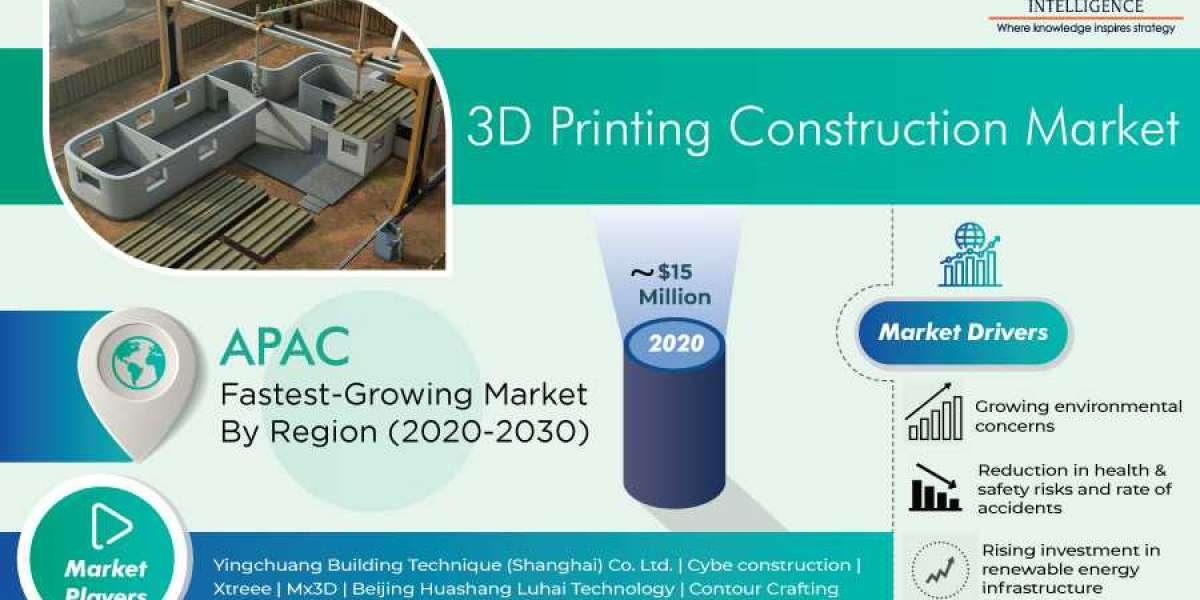The 3D printing construction market value is growing at a significant rate attributed to the environmental concerns raised due to waste generated by the activities of the construction industry. Customization and architectural flexibility have increased the potential of 3D printing construction technology. Construction 3D printing is used for manufacturing construction elements or complete buildings through polymer, concrete, metal, 3D printer printing concrete or other materials.
APAC holds a significant position in the 3D printing construction market, attributed to a large number of building constructions utilizing advanced technology and increased RD activities. It is expected to retain the same position in the market in the near future, attributed to the major construction companies utilizing 3D printing technology in the region. The primary consumers of 3D-printable construction materials are the building and infrastructure sectors. The increased presence of construction firms in the region drives the market.
Under the end user segment, the building category is expected to experience significant growth in the 3D printing construction market in the developing countries, attributed to the growing construction and surge in demand for affordable housing. It is extensively used in building construction due to the increasing demand for high-performing and complex designs in actual construction projects bringing life to it. Similarly, the extrusion category is expected to dominate the market, attributed to its extensive use for on-site construction applications.
The newly introduced methods such as developing robotic arm extruders, metal technologies and sand 3D printing drive the 3D printing construction market. 3D printing facilitates ease in creating complex and unusual designs and shapes. For example, Forward AM launched a new architecture-oriented 3D printing material, an entity of BigREP and BASF SE. The Concrete Formwork filament facilitates complex supports for precast concrete at a reduced cost. Construction companies are planning to use new polymer and BigRep's STUDIO G2 3D printer for concrete staircase construction.
A significant amount of waste is generated by the construction industry. According to the Department for Environment, Food Rural Affairs in the UK, 221.0 million tons of waste was generated in 2016. Construction, excavation, and demolition activities led to 59% of the total waste generation. Furthermore, the construction industry produced 600 million tons of debris in the US in 2018, according to the Environmental Protection Agency (EPA). The 3D printing construction can be utilized to reduce wastage as it facilitates using only the required material for printing the structure.
The primary 3D printing construction market players are Xtreee, Mx3D, Beijing Huashang Luhai Technology and Cybe construction. The market players are focusing on entering the rising economies to increase their customer base. For example, the new office of Dubai Municipality was printed by the Yingchuang Building Technique Co. Ltd. in February 2021. It was registered in the Guinness Book of World Records for being the first 3D-printed commercial building. Similarly, Larsen Toubro Limited finished the construction of the first 3D-printed two-storey building in India in November 2019.
Therefore, 3D printing technology is extensively utilized in the construction industry to reduce the wastage and facilitate the ease in building high performing structures and complex designs.



